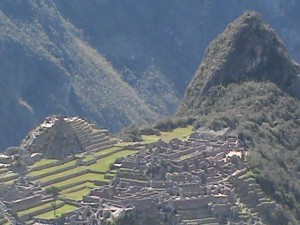Leadership in Peru
Guest post by Bruce Avolio, Executive Director of the Center for Leadership and Strategic Thinking and Marion B. Ingersoll Professor of Management

Recently on a trip to the Ivey School of Business in London, Ontario, I was asked, “how does one lead when they are not sure where they are going?” Many might say, just watch our U.S. politicians if you want to see how! More seriously, the more dynamic environments become, the more likely leaders are going to need to lead not knowing exactly where they are headed. As I thought about this question I went back to a recent trip I had taken to Peru. Peru is one of those South American economies that is shedding its past – recent past in terms of military dictatorships – and growing at a healthy clip, at least for the more educated class in places like Lima. Peru has a rich history that dates back well before many of the world’s other well-known societies, starting with the Incas which are considered one of the modern ‘older’ civilizations. There are two civilizations that pre-dated the Incas going back at least 5,000 years.
As Peru accumulates wealth, it is now able to invest in discovering its past. It is not an overstatement to say the Inca culture, traditions, food and history are becoming an economic force in Peru. Just see Machu Picchu and you will understand what I mean. This is one of the most amazing cities built by the Incas high atop a mountain that is one of the true wonders of the world. Going to Peru and its many historical Inca sites, taught me a lot about how advanced this society was. For example, the Incas knew which foods to eat that had low cholesterol, they knew how to build structures to withstand earthquakes, and they knew how to do brain surgery. And the answer to that question posed to me in London, Ontario lies in how the Incas built buildings. They built buildings by seamlessly integrating them into the rock upon which they were built. The Incas saw mountains as sacred. Rather than dig a big hole and then build the foundation, they built the building into the existing foundation, which took more time and care, but as we can see, lasted longer. This was the case for all buildings throughout Peru, ranging from temples to residences for Inca workers.
How does the Inca foundations help me answer the Ivey question? One must build an authentic foundation for leadership on which the rest of the structure can be created. We see organizations that have no ‘firm or genuine’ foundation, no core values and therefore no solid basis to lead into an unknown future. Many times we have to go backwards in order to move forwards and answer where we are going, which in this case is into the unknown. And I promise I will avoid writing a pop book “7 glorious Inca Principles of Effective Leadership.”
